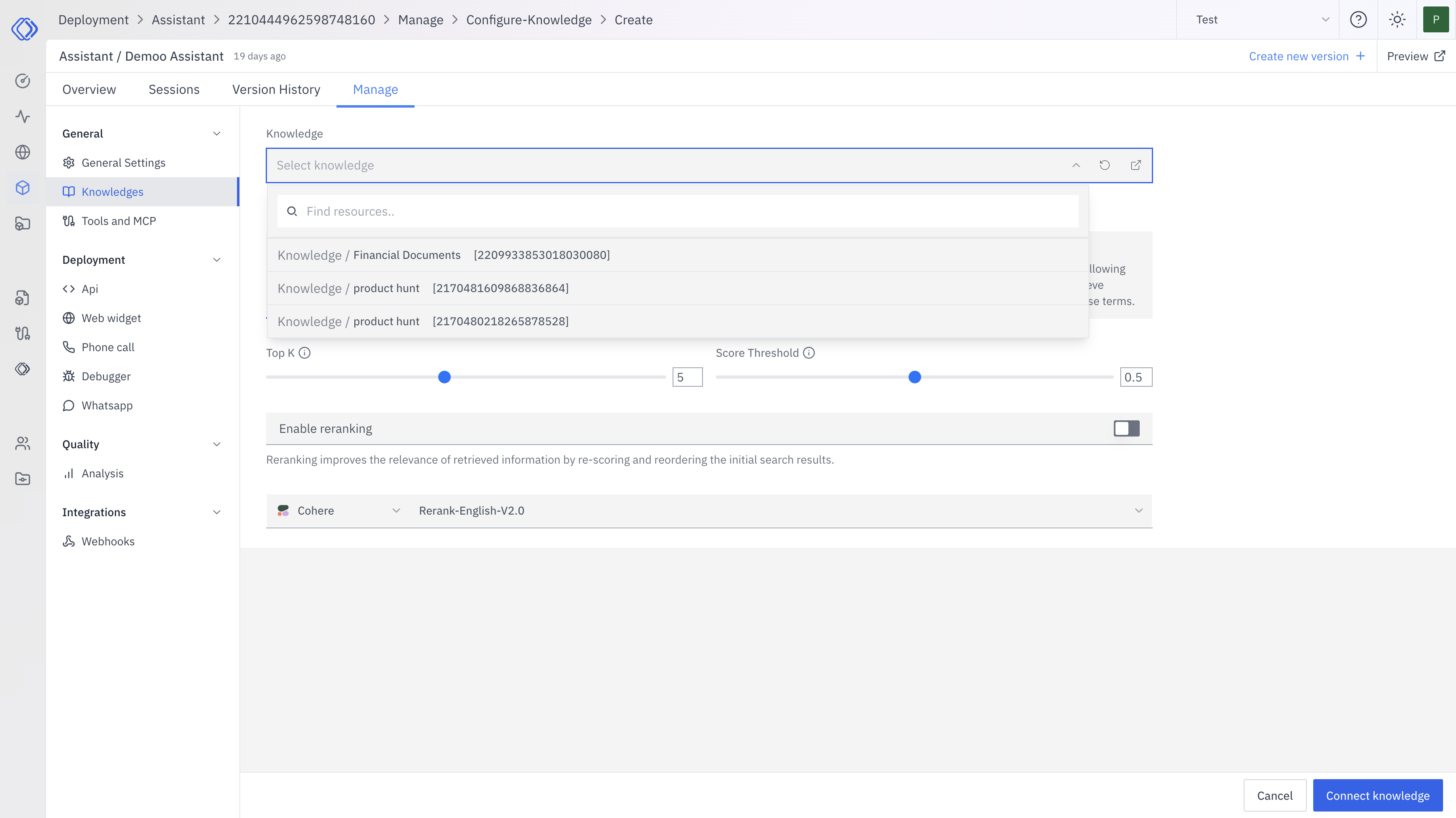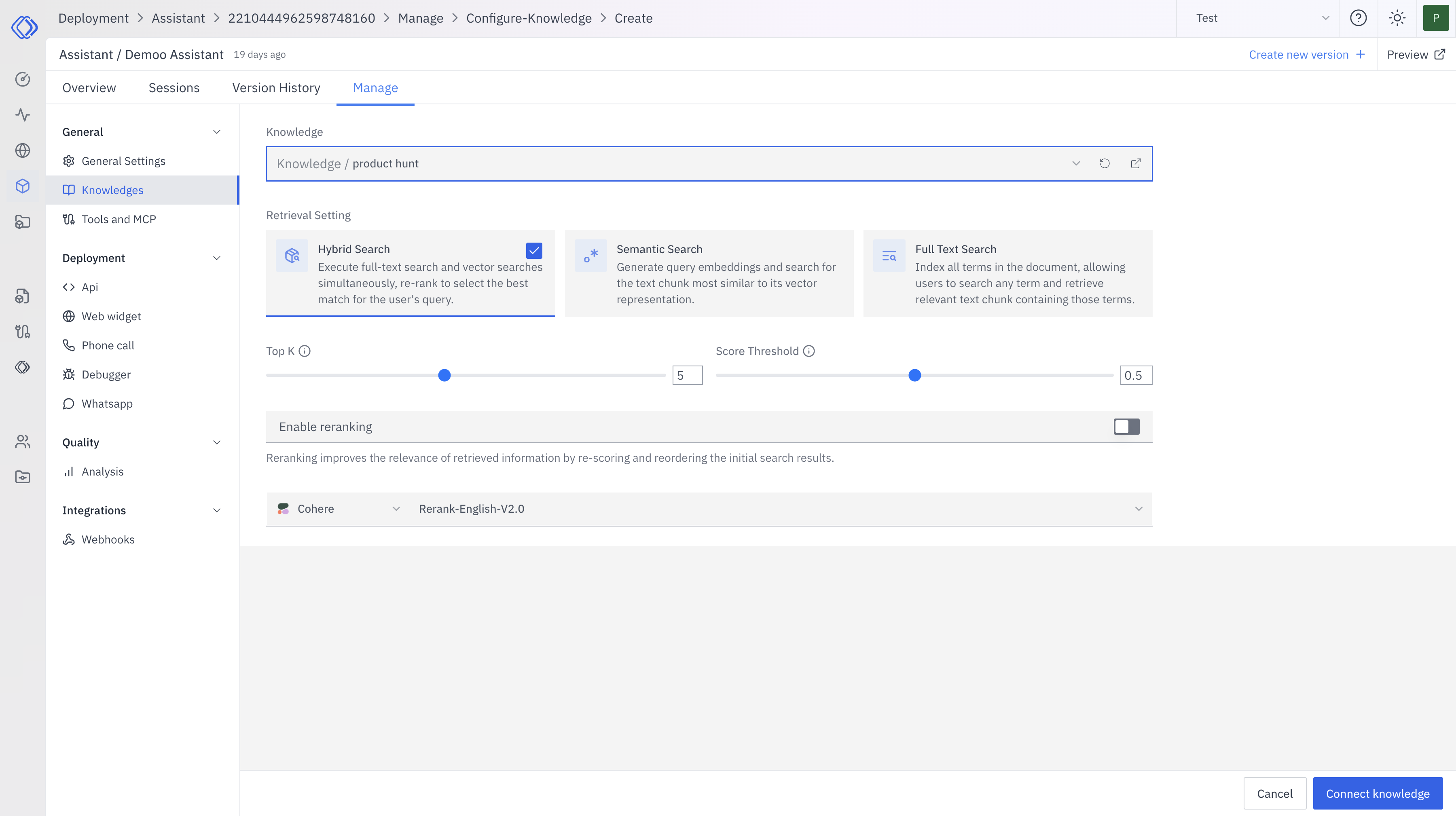Prerequisites
Before you begin, ensure you have:Created a Knowledge Source
Learn how to create a knowledge source in our Creating Knowledge Sources guide.
Created an Assistant
If you haven’t created an assistant yet, follow our Creating an Assistant guide.
1
Access Knowledge Configuration
When creating or editing an assistant, navigate to the “Manage” tab and select “Knowledges” from the sidebar.
2
Create or Select Knowledge Source

- Type to search for an existing knowledge source
- Select from the dropdown list of available knowledge sources
- Create a new knowledge source if needed
3
Configure Retrieval Settings

-
Choose the search method:
- Hybrid Search (recommended): Combines full-text search and vector search for optimal results.
- Semantic Search: Uses query embeddings to find semantically similar content.
- Full Text Search: Indexes and searches all terms in the document.
- Adjust the “Top K” value: This determines the number of most relevant results to retrieve. A higher value may provide more comprehensive results but could include less relevant information.
- Set the “Score Threshold”: This filters results based on their relevance score. A higher threshold will only return more closely matched results.
-
Enable “Reranking” (Optional):
Reranking improves the relevance of retrieved information by:
- Re-evaluating the initial search results
- Considering additional context and nuances
- Potentially reordering the results for better relevance
- Select the reranking model: If reranking is enabled, choose an appropriate model. The default “Rerank English v2.0” works well for English content.
4
Confirm Knowledge Configuration
After configuring the knowledge settings, click “Connect knowledge” to add it to your assistant.You can add multiple knowledge sources by repeating this process, allowing your assistant to access a diverse range of information.
Best Practices
- Start with Hybrid Search for a balance of broad coverage and semantic understanding.
- Experiment with different “Top K” and “Score Threshold” values to find the optimal balance for your use case.
- Enable reranking for more nuanced and contextually relevant results, especially for complex queries.